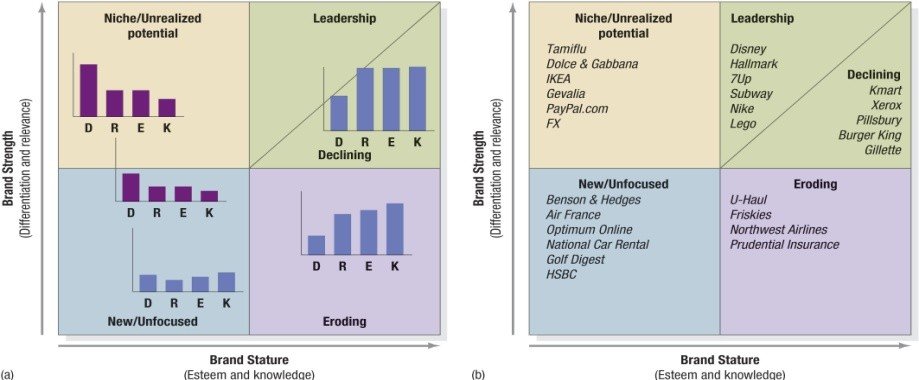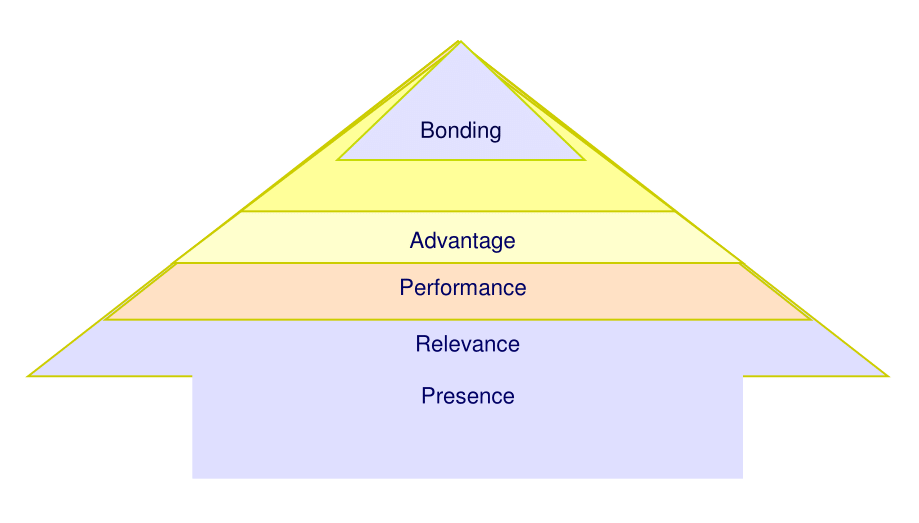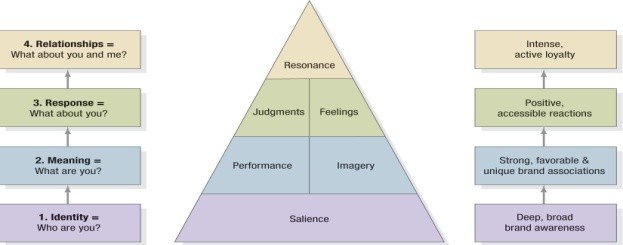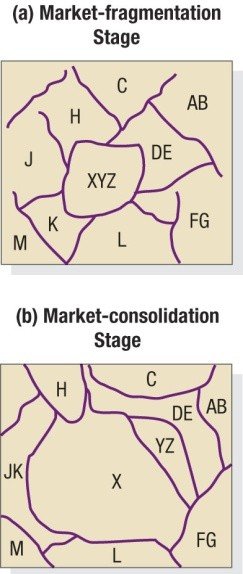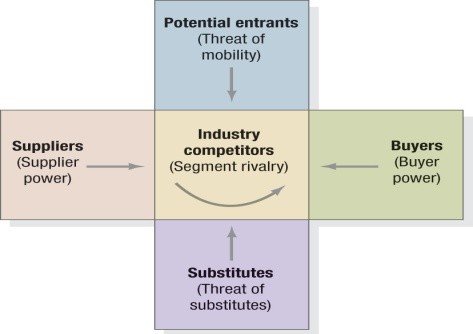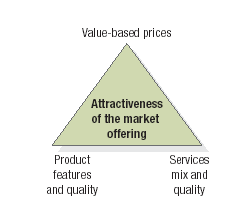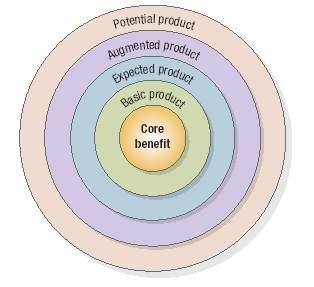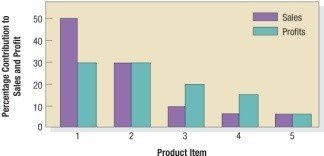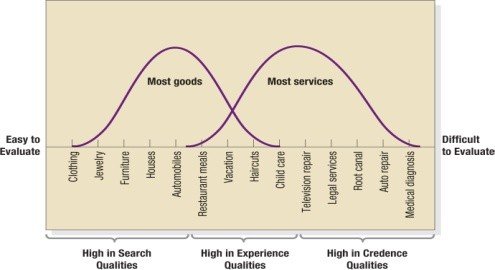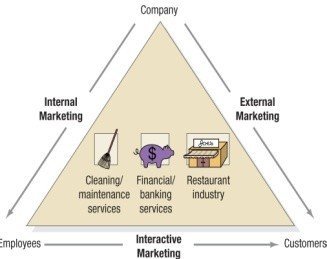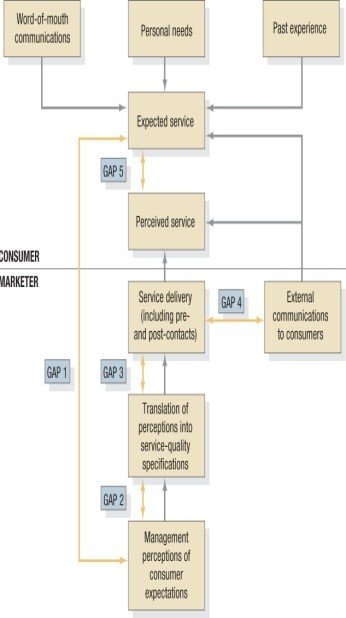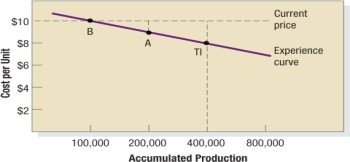Marketing
Creating Brand Equity
What is Brand Equity?
- Brand – a name, term, sign, symbol, or design, or a combination of them, intended to identify the goods or services of one seller or group of sellers and to differentiate them from those of competitors
- Branding – a means to distinguish the goods of one producer from those of another
Role of Brands
- Brands identify the source or maker of a product and allow consumers to assign responsibility to a particular manufacturer or distributor
- Customers may evaluate identical products differently depending on how it is branded
- Consumers learn about brands through past experiences with the product and its marketing program
- For consumers: Brands’ ability to simplify decision making and reduce risk
- Brands also perform value to firms
- Simplify product handling or tracing
- Brand offers the firm legal protection for unique features or aspects of the product; ensures that firm can safely invest in the brand and reap benefits of a valuable asset
- Brand name – protected through registered trademarks; Manufacturing process - patents Packaging - copyrights and designs
- Brand can signal a certain level of quality
- Brand loyalty provides predictability (also price premium) and security of demand for the firm and creates barriers to entry that make it difficult for other firms to enter the market
- Branding can be seen as a powerful means to secure a competitive advantage
- To firms, brands represent enormously valuable pieces of legal property that can:
- influence consumer behavior,
- be bought and sold, and
- provide the security of sustained future revenues to their owner
Attributes of Strong Brands
- Excels at delivering desired benefits
- Stays relevant
- Priced to meet perceptions of value
- Positioned properly
- Communicates consistent brand messages
- Well-designed brand hierarchy
- Uses multiple marketing activities
- Understands consumer-brand relationship
- Supported by organization
- Company monitors sources of brand equity
The Scope of Branding
- Branding – endowing products and services with the power of brand; all about creating differences
- Key to branding: consumers must not think that all brands in the category are the same
- Branding can be applied virtually anywhere a consumer has a choice:
- Physical good, a service, a store, a person, a place, an organization, or an idea
Defining Brand Equity
- Brand Equity – the added value endowed to products and services
- Reflected in how consumers think, feel, and act with respect to the brand, as well as prices, market share, and profitability that the brand commands for the firm
- An important intangible asset that has psychological and financial value to the firm
- The power of a brand lies in the minds of existing or potential customers and what they have experienced directly and indirectly about the brand
- Customer-based equity – the differential effect that brand knowledge has on consumer response to the marketing of that brand
- 3 ingredients to customer-based equity:
- Brand equity arises from differences in consumer response
- Differenced in response are a result of consumer’s knowledge about the brand
- Brand knowledge – consists of all the thoughts, feelings, images, experiences, beliefs, and so on that become associated with the brand
- The differential response by consumers that makes up the brand equity is reflected in perceptions, preferences, and behavior related to all aspects of the marketing of brand
- 3 ingredients to customer-based equity:
- Marketing Advantages of Strong Brands:
- Improved perceptions of product performance
- Greater loyalty
- Less vulnerable to competition
- Less vulnerable to crises
- Larger margins
- Inelastic consumer response to price increases
- Elastic consumer response to price decreases
- Greater trade cooperation
- Increase in effectiveness of IMC
- Licensing opportunities
- Brand extension opportunities
Brand Equity as a Bridge
- All marketing dollars spent each year on the products and services should be thought of as investments in consumer brand knowledge (*quality of investment in brand building against quantity, beyond some minimal threshold amount)
- Brand Promise – the marketer’s vision of what the brand must be and do for consumers
- True value and future prospects of a brand rest with consumers, their knowledge about the brand, and their likely response to marketing activity as a result of this knowledge
Brand Equity Models:
- Brand Asset Valuator (from Young and Rubicam (Y&A) ad agency)
- 4 pillars/ components of brand equity: Differentiation; Relevance; Esteem; Knowledge
BAV Power Grid
- examining the relationships among these four dimensions reveals much about its current & future status
- Aaker Model (by David Aaker)
- Views brand equity as a set of 5 categories of brand assets and liabilities linked to a brand that add or subtract from the value provided by a product or service to a firm and/or to that firm’s customers
- Brand loyalty
- Brand awareness
- Perceived quality
- Brand associations
- Other proprietary assets such as patents, trademarks, and channel relationships
- Brand Identity – the unique set of brand associations that represent what the brand stands for and promises to customers
- Brand-as product (product scope, attributes, quality/value, uses, users, country of origin)
- Brand-as-organization (org attributes, local vs. global)
- Brand-as-person (brand personality, bran-customer relationships
- Brand-as-symbol (visual imagery/metaphors and brand heritage)
- Views brand equity as a set of 5 categories of brand assets and liabilities linked to a brand that add or subtract from the value provided by a product or service to a firm and/or to that firm’s customers
- BRANDZ (Millward Brown and WPP)
- Brand building involves a sequential series of steps, where each step is contingent upon successfully accomplishing the previous step
- Studies show that bonded consumers (at top level of pyramid( build stronger relationships with the brand and spend more of their category expenditures on the brand than those at lower levels of pyramid
- Brand building involves a sequential series of steps, where each step is contingent upon successfully accomplishing the previous step
- Brand Resonance Model
- The creation of significant brand equity involves reaching the top or pinnacle of brand pyramid, and will occur only if the right building blocks are put into place
Building Brand Equity
- 3 Drivers of Brand Equity:
- Brand Elements (i.e. brand names, URLs, logos, symbols, characters, spokespeople, slogans, jingles, packages, signage)
- Marketing Activities
- Meaning Transference (other association indirectly transferred to the brand by linking it to some other entity i.e. person, place or thing)
Choosing Brand Elements
- Brand Elements – those trademarkable devices that serve to identify and differentiate the brand
- The test of brand-building ability of these elements is what consumers would think or feel about the product if they only knew about the brand element
Brand Element Choice:
- Brand Building (how brand equity can be built through the judicious choice of brand element
- Memorable
- Meaningful
- Likability
- “Defensive”; concerned with how the brand equity contained in a brand element can be leveraged and preserved in the face of different opportunities and constraints
- Transferable
- Adaptable
- Protectible
Developing Brand Element
- Brand elements can play a number of brand-building roles
- Brand elements should be easily recognized and recalled and inherently descriptive and persuasive
- The different associations that arise from the likeability and appeal of brand elements may also play a critical role in the equity of a brand
- Slogans – a powerful brand element; extremely efficient means to build brand equity; indispensible means of summarizing and translating the intent of a marketing program
Designing Holistic marketing Activities
- Primary input comes from the product or service and supporting marketing activities
- Brands are not built by advertising alone; customers come to know a brand through a range of contacts and touch points
- Brand contact – any information-bearing experience a customer or prospect has with the brand, the product category, or the market that relates to the marketer’s product or service
Personalization (i.e. experiential marketing, one-to-marketing, and permission marketing)
Integration – mixing and matching marketing activities to maximize their individual and collective effects; 4Ps may not adequately describe modern marketing programs.
- As much as possible, there should be a match among certain communication options so that the effects of any one option are enhanced by the presence of another
- Brand awareness – consumers’ ability to identify the brand under different conditions, as reflected by their brand recognition
- Brand image – perceptions and beliefs held by consumers, as reflected in the associations held in consumer memory
Internalization – marketers must not “walk the walk” to deliver the brand promise
- Internal Branding – activities and processes that help to inform and inspire employees
- Brand bonding – occurs when customers experience the company as delivering on its brand promise
- Brand promise will not be delivered unless everyone in the company lives the brand
Leveraging Secondary Associations
- Brand equity may be created by lining the brand to other information in memory that conveys meaning to consumers
Measuring Brand Equity
- Indirect approach – assesses potential sources of brand equity by identifying and tracking consumer brand knowledge
- Direct approach – assesses the actual impact of brand knowledge on consumer response to different aspects of the marketing
Brand Audit – a consumer-focused exercise that involves a series of procedures to assess the health of the brand, uncover its sources of brand equity and suggest ways to improve and leverage its equity
- Brand Inventory – to provide a current, comprehensive profile of how all the products and services sold by a company are marketed and branded; helps to suggest what consumer’s current perceptions may be based on
- Brand Exploratory - research activity conducted to understand what consumers think and feel about the brand and its corresponding product category to identify sources of brand equity
Brand Tracking – collect information from consumers on a routine bases over time; a means of understanding where, how much, and in what ways brand value is being created
Brand Valuation – the job of estimating the total financial value of the brand
Managing Brand Equity
Brand Reinforcement
- Brand is reinforced by marketing actions that consistently convey the meaning of the brand to consumers in terms of:
- what products the brand represents; core benefits it supplies; what needs it satisfies
- and how the brand make those products superior and which strong, favorable, and unique brand associations should exist in the minds of consumers
- Reinforcing brand equity requires innovation and relevance throughout the marketing program
- Brand must always be moving forward – in the right direction
- Consistency of the marketing support the brand receives
Brand Revitalization
- Reversing a facing brand’s fortunes requires either that it (a) “returns to its roots” and lost sources of brand equity are restores or that (b) new sources of brand equity are established
- “back to basics” or “reinvention”
Brand Crisis
- In general, the more that brand equity and a strong corporate image has be established – the more likely it is that the firm can weather the storm
- The longer it takes a firm to respond to a marketing crisis, the more likely it is that consumers can form negative impressions as a result of unfavorable media coverage or word of mouth
Devising a Branding Strategy
- Involves deciding the nature of new and existing brand elements to be applied to new and existing products
1. Develop new brand elements for new product
- Brand line
- Brand mix
2. Apply existing brand element
- Sub-brand
- Parent brand
- Line extension
- Category extension
3. Use a combination of old and new
- Category extension
- Family brand
- Branded variants
- Licensed product
Branding Decision: To Brand or Not to Brand?
4 General Strategies used in choosing which brand name to use:
- Individual names
- Company does not tie its reputation to the product’s; if the product fails or appears to have low quality, the company’s name or image is not hurt
- Blanket family names
- Development costs is less because there is no need for “name” research or heavy advertising expenditures to create brand-name recognition
- Separate family names for all products
- If a company produces quite different products, it is not desirable to use one blanket family name
- Corporate name combined with individual product names
- Company name legitimizes, and the individual name individualizes the new product
Brand Extensions – firms leveraging on their brand by introducing a host on new products under some of their strongest brand names
- Advantages:
- New-product success
- Positive feedback effects
- Disadvantages:
- “line-extension trap”
- Brand dilution – occurs when consumers no longer associate a brand with a specific product or highly similar products and start thinking less of the brand
Brand Portfolios
The set of all brands and brand lines a particular firm offers for sale to buyers in a particular category
In general, the basic principle in designing a brand portfolio is:
- To maximize market coverage, so that no potential customers are being ignored but
- Minimize brand overlap, so brands are not competing to gain customer approval
- Each brand should be clearly differentiated and appealing to a sizable enough marketing segment to justify its marketing and production costs
- Brand Roles in Brand Portfolio:
Crafting the Brand Position
Developing and Communicating a Positive Strategy
- All marketing strategy is built on STP – Segmenting, Targeting and Positioning
- Positioning – the act of designing the company’s offering and image to occupy a distinctive place in the mind of the target market
- Goal: locate the brand in the minds of consumers to maximize the potential benefit to the firm
- Positioning starts with a product… but positioning is not what you do to a product. Positioning is what you do to the mind of the prospect. That is, you position the product in the mind of the prospect.
- Positioning – the act of designing the company’s offering and image to occupy a distinctive place in the mind of the target market
Competitive Frame of Reference
- First determine category membership (the products or sets of products with which a brand competes and which function as close substitutes)
- Then, have target market decisions (often a key determinant of the competitive frame of reference – can determine the nature of competition)
Points-of-Parity and Points-of-Difference
Points-of-Difference (POD) – attributes or benefits consumers strongly associate with a brand, positively evaluate, and believe that they could not find to the same extent with a competitive brand
Point-of-Parity (POPs) – associations that are not necessarily unique to the brand but may in fact be shared with other brands
- Category POP – associations consumers view as essential to be a legitimate and credible offering within a certain product or service category
- Competitive POP – associations designed to negate competitors’ POD
Establishing Category Membership
3 Ways to convey a brand’s category membership:
- Announcing category benefits
- Comparing to exemplars
- Relying on the product descriptor
Choosing POPs and PODs
3 Key Consumer Desirability Criteria for PODs:
- Relevance
- Distinctiveness
- Believability
3 Key Deliverability Criteria:
- Feasibility
- Communicability
- Sustainability
Creating POPs and PODs
- Many attributes or benefits that make up the POP and POD are negatively correlated. Examples:
- Low-price vs. High quality
- Taste vs. Low calories
- Nutritious vs. Good tasting
- Efficacious vs. Mild
- Powerful vs. Safe
- Strong vs. Refined
- Ubiquitous vs. Exclusive
- Varied vs. Simple
- Ways to address the problem of negatively correlated POPs and PODs
- Present Separately
- Leverage equity of another entity
- Redefine the relationship
Differentiation Strategy (to avoid the commodity trap)
- Product Differentiation
- Product form
- Features
- Performance
- Conformance
- Durability
- Reliability
- Reparability
- Style
- Design
- Ordering ease
- Delivery
- Installation
- Customer training
- Customer consulting
- Maintenance
- Personnel Differentiation
- Channel Differentiation
- Image Differentiation
- Identity – way a company aims to identify or position itself or its product
- Image – way the public perceives the company or products
Product Life-Cycle Marketing Strategies
Facts about Life Cycles:
- Products have a limited life.
- Product sales pass through distinct stages.
- Profits rise and fall at different stages.
- Products require different marketing, financial, manufacturing, purchasing, and human resource strategies in each stage.

Product Life Cycles (PLC) |

Common Product Life-Cycles Patterns |
Syle, Fashion, and Fad Life Cycles
Marketing Strategies: Introduction Stage and the Pioneer Advantage
- Profits are negative or low; promotional expenditures are at their highest ratio to sales becaasue of the need to:
- Inform potiential consumers
- Induce product rial
- Secure distribution in retaio outlets
- Companies must decide when to enter the markets
- First can be rewarding, but risky and expensive
- Later makes sense if the firm can bring superir technology, wuality or brand strength
- Speeding up innovation time is essential in an age of shortening PLCs
Long-Range Product Market Expansion Strategy
Marketing Strategies: Growth Stage
- Marked by rapid climb in sales
- Early adopters like the product, additional consumers start buying it
- New competitors enter; introduce new product features and expand distributuion
- To sustain rapid market growth:
-
- Improve product quality and add new product feature and improved styling
- Add new models and flanker products
- Enter new market segments
- Increase distribution coverage and enter new distribution channels
- Shift from product-awareness advertising to product preference advertising
- Lower prices to attract the next layer of price-sensitive buyers
-
Marketing Strategies: Maturity Stage
- Rate of sales growth slows; lasts longer and poses big challenges
- 3 Phases:
-
- Growth
- Stable (sales flatten on a per capita basis becaseu of market saturation)
- Decaying maturity (absolute level of sales starts to decline, customers begin switching to other products)
- Sales slowdown creates overcapacity in the industry, which leads to intensified competition
- Struggle to become one of the “big three” and achieve profits through high volume and low costs? Or pursue a niching strategy – achieve profits through low volume and a high margin
- Some abandon weaker products and concentrate on more profitable products and on new products
-
Market Modification
- Try to expand the number of brand users by converting nonusers
- Try to expand the number of brand users by entering new market segments
- Winning competitors’ customers
Product Modification
- Quality improvement
- Feature improvement
- Style improvement
Marketing Program Modification
- Prices
- Distribution
- Advertising
- Sales promotion
- Personal selling
- Services
Marketing Strategies: Decline Stage
- Carrying a weak product is very costly to the firm – there are many hidden costs
- 5 Strategies available:
- Increasing the firm’s investment (to dominate the market or strenthen its cometitive position
- Maintaining the firms’ investment level until the uncertaintities about the industry are resolved
- Decreasing the fims’s investment level selectively, by dropping unprofitable custtomer groups, while simultaneously strenthening the firm’s investment in lucrative niches
- Harvesting (“milking”) the frim’s investment to recover cash quickly
- Divesting the business quickly by disposing of its assets as advantageously as possible
Market Evolution
- Markets evolve though 4 stages:
- Emergence – before a market materializes, it exists as a latent market
- Growth – new firms enter the market if the new product sells well
- Maturity – competitors cover and serve all the major market segments; competitors go further and invade each other’s segments, reducing everyone’s profits in the process; as market slows down, the market splits into finer segment and high market fragmentation occurs, oftn follewed by a market consolidation caused by the emergence of anew attribute that has strong appeal
- Decline – the demand for the present products will begin to decresase; either society’s toal need level declines or a new technology replaces the old
Dealing with Competition
CompetitiveForces
- Michael Porter had identified 5 Forces that determine the intrinsic long-run attractiveness of a market or market segment:
- Threat of intense segment rivalry
- Threat of new entrants
- Threat of substitute products
- Threat of buyers’ growing bargaining power
- Threat of suppliers’ growing bargaining power
Identifying Competitors
- the range of a company’s actual and poetential competitors can be much broader
- company is more likely to be hurt by emerging competitors or new technology than by current competitors
Industry Concept of Competition
- Number of Sellers and Degree of Differentiation
- Pure monopoly
- Oligopoly
- Monopolistic competition
- Pure competition
- Entry, Mobility, and Exit Barriers
- Cost Structure – each industry has a certain cost burden that shapes much of its strategic conduct
- Degree of Vertigal integration (forward integration)
- Often lowers costs;
- Company gains a larger shareof the value-added stream;
- Company can manipulate prices and costs in differet parts of the value chain ito earn profits where taxes are lowest
- Degree of Globalization – some are highly local; others are global (such as oil, aircraft engines, cameras)
Market Concept of Competition
- Competitors are companies that satisfy the same customer need
- The marekt concept of competition reveals a broader set of actual and potential competitors
- Profiling a company’s direct and indirect competitors by mapping the buyers steps in obtaining and using the product (competitor map)
- Highlights both the opportunities and challenges a company faces
Analyzing Competitors
- Once a company identifies its primary competitors, it must ascertain their strategies, objectives, strengths, and weaknesses
Strategies
- Strategic group – a group of fims folleing the same strategy in a given target market
Objectives
- What is each competitor seeking in the marketplace? What drives each competitor’s behavior?
- One useful assumption: Competitors strive to maximize profits
- Alternative assumption: Each competitor pursues some mix of ofjective: current profitabitliy, market share growth, cash flow, technologicla leadership, or service leadership
Strengths and Weaknesses
- In general, a company should monitor 3 variables when analyzing competitors:
- Share of market – competitor’s share of the target market
- Share of mind – % of customer who named the competitor in: “Name the first company that comes to mind in this industry”
- Share of heart - % of customer who named the competitor in responding to: “ Name the company from which you would prefer to buy the product.”
- Companies that make steady gains in the mind share and heart share will inevitably make gains in market share and profitability
Selecting Competitors
- Strong vs. Weak
- Close vs. Distant
- “Good” vs. “Bad”
Competitive Strategies for Market Leaders
- Classifying frims by the roles they play in the target market:
- Market leader
- Market challenger
- Market follower
- Market nichers
Expandind the Total Market (The dominant firm normaly gains the most when the total market expands)
- New customers - search for more users
- among those who might use it but do not (market-penetration strategy)
- those who have never used it (new-market segment strategy)
- those who live elsewhere (geographical-expansion strategy)
- More usage – through :
- Increasing level or quantily of consumption
- Increasing frequency of consumption
Defending Market Share > Continous Innovation!
- Responsive Marketer – finds a stated need and fills it
- Anticipative Marketer – looks ahead into what needs customers may have in the near future
- Creative Marketer – discovers and produces solutions customers did not ask for but to which they enthusiastically responds
- 6 Defense strategies:
- Position Defense
- Flank Defense
- Preemptive Defense
- Counteroffensive Defense
- Mobile Defense
- Contraction Defense
Other Competitive Strategies:
Market-Challenger Strategies
- Defining the strategic objective and opponent(s)
- Define strategic objective; most aim to increase market share
- Challenger must decide whom to attack:
- it can attact market leader
- it can attact firms of its own size that are not doing the job and are underfinanced
- it can attact small local and regional firms
- Choosing a General Attack Strategy
- Frontal attack – attacker matches its opponent’s product, advertising, price, and distribution
- Flank attack
- Geographical attack - challenger spots areas where opponent is underperforming
- Segmental attack – identifying shifts in market segments that re causing gaps to develop, then rushing in to fill the gaps and develop them into strong segments
- Encirclement Attack - attempt to capture a wide slice of the enemy’s territory through a “blitz”; involves lauching a grand offensive on several fronts
- Bypass Attack – most indiret assult; bypassing the enemy and attacking eaiser markets to brader one’s resource base
- Diversiyng into unrelated products
- Diversifying into new geographical markets
- Leapfrogging in to new technologies to supplant existing products
- Guerilla Warfare – consist of waging small, intermittent attacks to harass and demoralize the opponent and eventually secure permanent footholds
- Selective price cuts, intense promotional blitzes, occasional legal action
- Choosing a Specific Attack Strategy
- Price discounts
- Lower-priced goods
- Value-priced goods
- Prestige goods
- Product proliferation
- Product innovation
- Improved services
- Distribution innovation
- Manufacturing-cost reduction
- Intensive advertising promotion
Market-Follower Strategies
- Counterfeiter
- Cloner – emulates the leader’s products, name,a nd packaging, with slight variations
- Imitator – copies some thins from the leader but maintains differentiation in terms of packagin, advertising, pricing, or location
- Adapter – takes the leaders’s products and adapts or improves them
Market-Nicher Strategies
- Firms with low shares of the total market can be highly profitable through smart niching
- Tend to offer high value, charge a premium price, achieve lower manufacturing costs, and shape a strong corporate culture and vision
- Why is niching so profitable?
- Market nicher ends up knowing the target customers so well that it meets their needs better than other firms selling to this nich casually
- 3 tasks of nichers:
- Create niches
- Expand niches
- Protect niches
Balancing Customer and Competitor Orientations
- Competitor Centered
- Plus: company develops a fither orientation; trains marketers to be on constant alert, to watch for weknesses in its competitor’s and own position
- Minus: the company is too reactive
- Customer Centered
- Customer-centered company is in a better position to identify new opportunities and set a course that promises to deliver long-run profits
Setting Product Strategy
Product Characteristics and Classifications
- Product – anything that can be offered to a market to satisfy a want or need
Components of the Market Offering
Product Levels: The Customer Value Hierarchy
- Core benefit – the service or benefit the customer is really buying
- Basic product
- Expected product – set of attributes and conditions buyers normally expect when they purchase this product
- Augmented product – exceeds customer expectations
- Potential product – encompasses all the possible augmentations and transformations the product or offering might undergo in the future; where company search for new ways to satisfy customers and distinguish their offer
Product Classifications
-
- Durability and Tangibility
- Nondurable goods – tangible goods normally consumed in one or a few uses, like beer and soap
- Durable goods – tangible goods that normally survive many uses: refs, machine tools, clothing
- Services – intangible, inseparable, variable, and perishable products
- Consumer-Goods Classification
- Convenience goods – purchased frequetly, immediately, and with a minimu of effort (staples, impulse goods, emergeny goods)
- Shopping goods – goods that consumer, in the process of selection and purchase characteristically compares on such bases as suitability, quality, price and style
- Specialty goods – have unique characteristics or brand identification for which a sufficient numer of buyers are willing to make a special purchasing effort
- Unsought goods – those the consumer does not know about or does not normally think of buying, like smoke detectors, insurance, cemetery plots, encyclopedias
- Industrial-Goods Classification
- Marterial and parts – goods that enter the manufacturer’s product completely
- Raw materials (farm products and natural products)
- Manufactured materials and parts
- Component materials
- Component parts
- Captial Items – long-lasting goods that facilitate developing or managing the finished product
- Installations or Equipment
- Supplies and Business services – short-term goods and services that facilitate developing or managing the finished product (MRO items)
- Maintenance and repair items
- Operating supplies
- Maintenance and repair
- Business advisory services
- Marterial and parts – goods that enter the manufacturer’s product completely
- Durability and Tangibility
Differentiation
Product differentiation
- Form
- Features
- Performance Quality
- Conformance Quality
- Durability
- Reliability
- Repairability
- Style
Design: The Integrative Force Design
- offers a potent way to differentiate and position a company’s products and services
- Factor that will often give a company its competitive edge
- Totality of features that affect how a product looks and functions in terms of customer requirements
Service Differentiation
- Ordering ease
- Delivery
- Installation
- Customer Training
- Customer consulting
- Maintenance and Repair
Product and Brand Relationships
Product Systems and Mixes
Product system - a group of diverse but related items that function in a compatible manner
Product mix (also product assortment) – set of all products and items a particular seller offers for sale
- A company’s product mix has a certain width, length, depth, and consistency
- Width – how many different produt lines the company carries
- Depth – total number of items in the mix
- Consistency – how closely related the various product lines are in eand use, prduction requirements, distributuion channels, or some other way
- These product-mix dimensions permit the company to expand its business:
- Add new product line – widening its product mix
- Lengthen each product line
- Add more product variant to each product – deepen its product mix
- Pursue more product-line consistency
Product Line Analysis
- Sales and Profits – a company can classify its products in 3 types that yield different gross margins, depending on sales volume and promotion
- Core product
- Staples
- Specialties
- Convenience items
Product-Item Contributions to a Product Line's Total Sales and Profits
- Market Profile – review how the line is positioned against competitors’ lines
- Product line – shows which competitors’ items are competing againt company’s items
- Also reveals possible location for new items
- Identifies market segment
- Product line – shows which competitors’ items are competing againt company’s items
Example of a Product Map
Product-Line Length
- Product lines tend to lengthen over time
- 2 Ways to lengthen a product line:
- Line Stretching – occurs when a company lengthens its product line beyond its current range
- Down-Market Stretch
- Up-Market Stretch
- Two-Way Stretch
- Line Filling – adding more items within the present range
- Line modernization, featuring, and pruning
- Line Stretching – occurs when a company lengthens its product line beyond its current range
Product-Mix Pricing
- Product-line pricing
- Optional-feature pricing
- Captive-product pricing
- Two-part pricing
- By-product pricing
- Product-bundling
Co-Branding and Ingredient Branding
-
- Co-branding (dual branding or brand bundling) – two or more well-known existing brands are combined into a joint product and/or marketed together in some fashion
- Ingredient Branding – involves creating brand equity for materials, components, or parts that are necessarily contained within other branded products
Packaging, Labeling, Warranties, and Guarantees
Packaging – the 5th P
-
- All activties of designing and producing the containter for a product (primary, secondary, shipping)
- Well-designed packages can create convenience and promotional value
- Packaging as a styling weapon
- The buyers’s first encounter with the product and is capable of turning the buyer on or off
- Factors has been influenced by:
- Sef-service – effective package must perform many of the sales tasks: attract attention, describe the product’s features, create consumer confidence, and make a favorable overall impression
- Consumer affluence – riising consumer affluence means consuemr are willing to pay a little more for the convenience, appearance, dependability, and prestige of better packages
- Company and Brand image – packages contribute to instant recognition of the company or brand
- Innovation opportunity – innovative packaging can bring large benefits to consumers and profits to producers
- Packaging objectives:
- Identify the brand
- Convey descriptive and persuasive information
- Facilitate product transportation and protection
- Assist at-home storage
- Aid product consumption
Labeling
Functions of labels:
- Identifies the product or brand
- Grade the product
- Describe the product
- Promote the product
Warranties and Guarantees
- Warranties – formal statements of expected product performance by the manufacturer
- Guarantees – reduces buyer’s perceived risk; suggest that the product is of high quality and that the company and its service performance are dependable
Designing and Managing Services
The Nature of Services
Service Industries are Everywhere
- Government sector
- Private nonprofit sector
- Manufacturing sector
- Retail sector
- Service – any act or performance that one party can offer to another that is essentially intangible and does not result in the ownership of anything; may or not be tied to a physical product
Categories of Service Mix
- Pure tangible good – no services accompany the product
- Tangible good with accompanying services - e.g. computers… repairs and maintenance
- Hybrid – equal parts of goods and services
- Major service with accompanying minor goods and services - e.g. airline passengers buy transportation
- Pure service – e.g. baby-sitting, psychotherapy, and massage
Service Distinctions
- Services vary as to whether they are equipment-based or people based
- Service processes
- Client’s presence required or not
- Personal needs or business needs
- Objectives(profit or nonprofit) and ownership (private or public
Distinctive Characteristics of Services
- Intangibility
- Services cannot be seen, tasted, felt, heard, or smelled before they are bought
- Buyers will look for evidence of quality
- Service provider’s task is to “manage the evidence” to “tangibilize the intangible”
- Performance clue
- Context clues
- Inseparability – services are typically produced and consumed simultaneously
- Variability – services will depend on who provides them and when and where they are provided
- Perishability – services cannot be stored
Marketing Strategies for Service Firms
A Shifting Customer Relationship
- Differentiated levels of service
- So services is not uniformly bad for all customers (i.e. big spenders get special discounts, promotional offers, and lots of special service)
- “Service unbundling”
Holistic Marketing for Services –requires:
- External marketing – describes normal work of preparing, pricing, distributing, and promoting the service to customers
- Internal marketing - describes training and motivating employees to serve customers well
- Interactive marketing – describe the employees’ skill in serving the client
Managing Service Quality
Customer Expectations
- In general, customers compare the perceived service with the expected service
- If perceived service falls below the expected service, customers are disappointed
- If perceived service meets or exceeds their expectations, they are apt to use the provider again
- Successful companies add benefits to their offering that not only satisfy customers but surprise and delight them – Delighting customers is a matter of exceeding expectations
5 Determinants of Service Quality (in order of importance)
- Reliability – ability to perform the promised service dependably and accurately
- Responsiveness – willingness to help customers and provide prompt service
- Assurance – knowledge and courtesy of employees and their ability to convey trust and confidence
- Empathy – provision of caring, individualized attention to customers
- Tangibles – appearance of physical facilities, equipment, personnel, and communication materials
Gaps that Cause Unsuccessful Service Delivery
- Gap between consumer expectation and management perception
- Gap between management perception and service-quality specifications
- Gap between service-quality specifications and service delivery
- Gap between service delivery and external communications
- Gap between perceived service and expected service
Best Practices of Service-Quality Management
- Strategic Concept
- Top-Management Commitment
- High Standards
- Self-Service Technologies (SSTS)
- Monitoring Systems
- Satisfying Customer Complaints
- Satisfying Employees
Managing Service Brands
Differentiating Services
Service offerings can be differentiated in many ways
- Offering can include innovative features
- What customer expects is called the primary service package
- Provider can add secondary service features to the package
Developing Brand Strategies for Services
- Choosing Brand Elements (easy-to-remember brand name is critical)
- Establishing Image Dimensions (organizational associations; may affect evaluations of service quality directly or indirectly)
- Devising Branding Strategy (consider developing brand hierarchy and brand portfolio that permits positioning and targeting of different market segments)
Managing Product Support Services
- Product support service is becoming a major battleground for competitive advantage
Identifying and Satisfying Customer Needs
Customer worries:
- Failure frequency
- Downtime; service dependability
- Out-of-pocket costs
Developing Pricing Strategies and Programs
Understanding Pricing
- Common Pricing Mistakes:
- Determine costs and take traditional industry margins
- Failure to revise price to capitalize on market changes
- Setting price independently of the rest of the marketing mix
- Failure to vary price by product item, market segment, distribution channels, and purchase occasion
How Companies Price
- Price as a strategic tool
- Effectively designing and implementing pricing strategies requires a thorough understanding of consumer pricing psychology and a systematic approach to setting, adapting, and changing prices
Consumer Psychology and Pricing - purchase decisions are based on how consumers perceive prices and what they consider to be the current actual price – not the marketer’s stated price
- Reference prices
- Price-quality inferences
- Price cues (price endings)
- Customers tend to process prices in a “left-to-right” manner rather than by rounding
- “9” in endings convey the notion of a discount or bargain
- Demand was actually increased 1/3 by raising the price from $34 to $39, but demand was unchanged when the price was increased from $34 to $44.
- If a company wants a high-price image, it should avoid the odd-ending tactic
- Prices that end with “0” or “5” are also common in the marketplace – thought to be easier for consumers to process and retrieve from memory
- “Sale” signs next to prices have been shown to spur demand, but only if not overused
- Total category sales are highest when some, but not all, items in a category have sale signs; past a certain point, use of additional sale signs will cause total category sales to fall
When to Use Price Cues:
- Customers purchase item infrequently
- Customers are new
- Product designs vary over time
- Prices vary seasonally
- Quality or sizes vary across stores
Setting the Price
Consumers often rank brands according to price tiers in a category
- Within any tier, there is a range of acceptable prices, called price bands
Step 1: Selecting the Pricing Objective
- Survival
- Maximum current profit
- Maximum market share
- Maximum market skimming
- Product-quality leadership
- Other objectives
Step 2: Determining Demand
- Price sensitivity
- Estimating demand curves
- Price elasticity of demand
Inelastic and Elastic Demand
Step 3: Estimating Costs
- Types of Costs and Levels of Production
- Accumulated production
- Activity-Based Cost Accounting
- Target Costing
Cost per unit as a Function of Accumulated Production
Step 4: Analyzing Competitors’ Cost, Prices, and Offers
Step 5: Selecting a Pricing Method
- Markup pricing
- Markup pricing works only if the marked-up price actually brings in the expected level of sales
- Target-return pricing
- Perceived-value pricing
- The key to perceived-value pricing is to deliver more value than the competitor and to demonstrate this to prospective buyers
- Value pricing
- Going-rate pricing
- Auction-type

